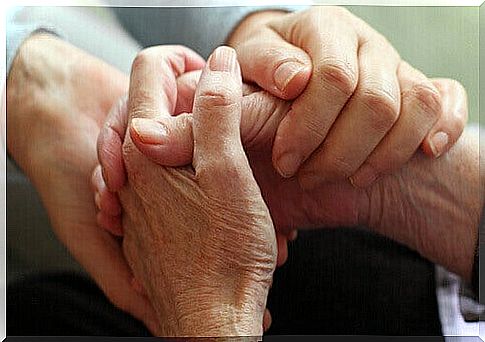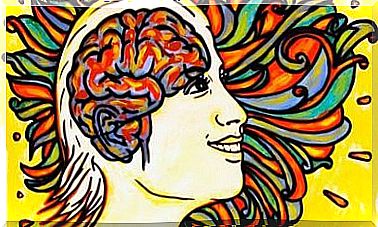3 Exercises Based On Compassionate Therapy

Compassion-Centered Therapy-based exercises can enrich any area of human relationships. One of its objectives is to promote in the first place an adequate inner well-being so that this balance becomes a vital impulse, like a fabulous expansive wave where we can alleviate suffering, provide support and raise awareness.
This type of approach can still be overlooked by a large number of people. Moreover, it seems at first glance to implement a series of principles much more philosophical than scientific. However, to understand its transcendence, we need to put ourselves in context. Compassion-focused therapy is part of that branch of what we know today as “third generation therapy”.
The goal of the latter is really useful and represents a considerable advance: instead of focusing exclusively on the symptomatology of diseases or disorders, the field of care goes a little further to address these other deeper aspects which also define l ‘To be human. Thus, areas such as the emotional world, feelings or any other type of personal or existential circumstance which surrounds the patient, have today, with this type of therapy, an essential value.
In addition, it should be remembered that it was Paul Gilbert who formulated the therapy centered on compassion after having carried out a synthesis of the theories of the attachment of J. Bowlby, of the Buddhist thought, of the evolutionary psychology of the human brain and of theory of mind. All of its principles underlie a very concrete fact: they remind us of the value of human compassion and its power, a capacity for personal growth and a tool with which to improve our relationships.

3 exercises based on compassion-centered therapy
The concept of compassion goes far beyond the philosophical or religious sphere. We sometimes fail to perceive the genuine transcendence contained in some numbers of the most frequently used words. Thus, the term compassion represents above all a vital quality where we can help ourselves and where we can build a more respectful, more human social reality.
To develop this valuable approach, psychologist Paul Gilbert has proposed a wide variety of techniques. This interesting range goes from purely behavioral strategies, through cognitive, narrative, Gestalt therapy or mindfulness. We must clarify that this is such an interesting and useful type of therapy, which is why it is worth learning some of the exercises based on compassion-centered therapy.
1. Create a safe place for us
This type of therapy teaches us that it is necessary to take yourself as a starting point in order to be able to work on compassion. No person can feel compassion for others if they do not develop it for themselves first.
Therefore, it is not only necessary to learn to love ourselves, but we must also “love ourselves properly”. Something like this involves giving shape to different psychological values, such as the development of adequate strengths, the intuition of needs and fears, and even the alleviation of personal suffering and the appeasement of intrusive thoughts, etc.
- To achieve this, we can start with a visualization technique where we can create a safe place. We need to give shape to a mental space where we can take refuge in order to find calm, where we can take care of ourselves and make decisions with more freedom.
- We can imagine a house made of crystals. We are surrounded by an evil stillness and a serene light that floods everything. Harmony resonates in every corner and all is peace. The interior of this crystal house is a welcoming place where we feel safe.
- We have to go for half an hour a day or when we feel the need to in this space, in this mental refuge. Here we can talk to ourselves with affection and sincerity, leaving the noise and fears outside.

2. Work on our compassionate self
Developing a compassionate self is one of the most important exercises in compassion-centered therapy. Such a task requires working on a series of fundamental aspects.
- First of all, we need to be aware of our own emotions, needs and sufferings.
- Kindness is not only exercised on others, in fact, it is vital that we also practice it with ourselves. This involves, for example, developing a positive internal dialogue and not being afraid to recognize our inner wounds, our faults or our deeper needs.
- Likewise, it is necessary to understand that a certain degree of suffering, at certain times, falls into the normality, and that there is therefore no reason to deny it, to hide it and even less to neglect it, in not paying attention.
- The compassionate self very often has to deal with my “anxious self”, “obsessive self” or “negative self”. It is undoubtedly a meticulous work to face this internal enemy who builds resistance, builds walls and generates psychological resources that hinder the power to heal us, to heal these wounds of yesterday or today. ‘hui.
3. Energize the flow of compassion
This exercise by which we are able to energize the flow of compassion is another of the most important skills in the context of compassion-centered therapy. What does that mean ? Basically, spreading to others that compassion that we have learned to practice with ourselves.
This exercise is carried out in different ways, but the most important is that we start from the desire, from the sincere desire to confer the well-being of others, to embrace the other with kindness and recognition, to think of our fellow men. in a positive way and even, why not, full of hope.
This flow can be created by three very simple verbalizations:
- I want you to be alright
- I want you to be happy
- I want you to be free from suffering

To conclude, this type of therapy is neither more nor less than a set of initiatives based on goodwill. It is also part of an undeniable scientific reality: compassion heals, compassion generates changes in ourselves and in others. It is a vital breath capable of opposing fears and anxieties, improving all therapeutic processes, lightening the treatment of any disease …
Let’s put it into practice, make more personal and social use of compassion.










